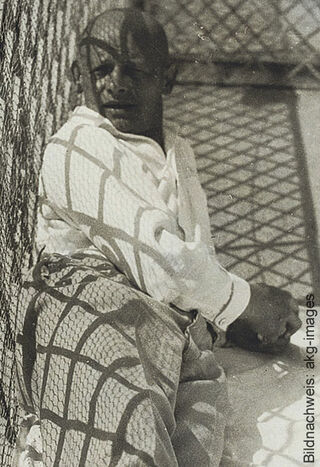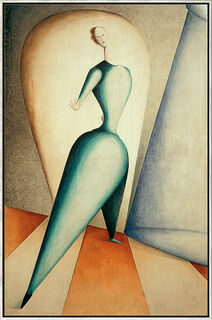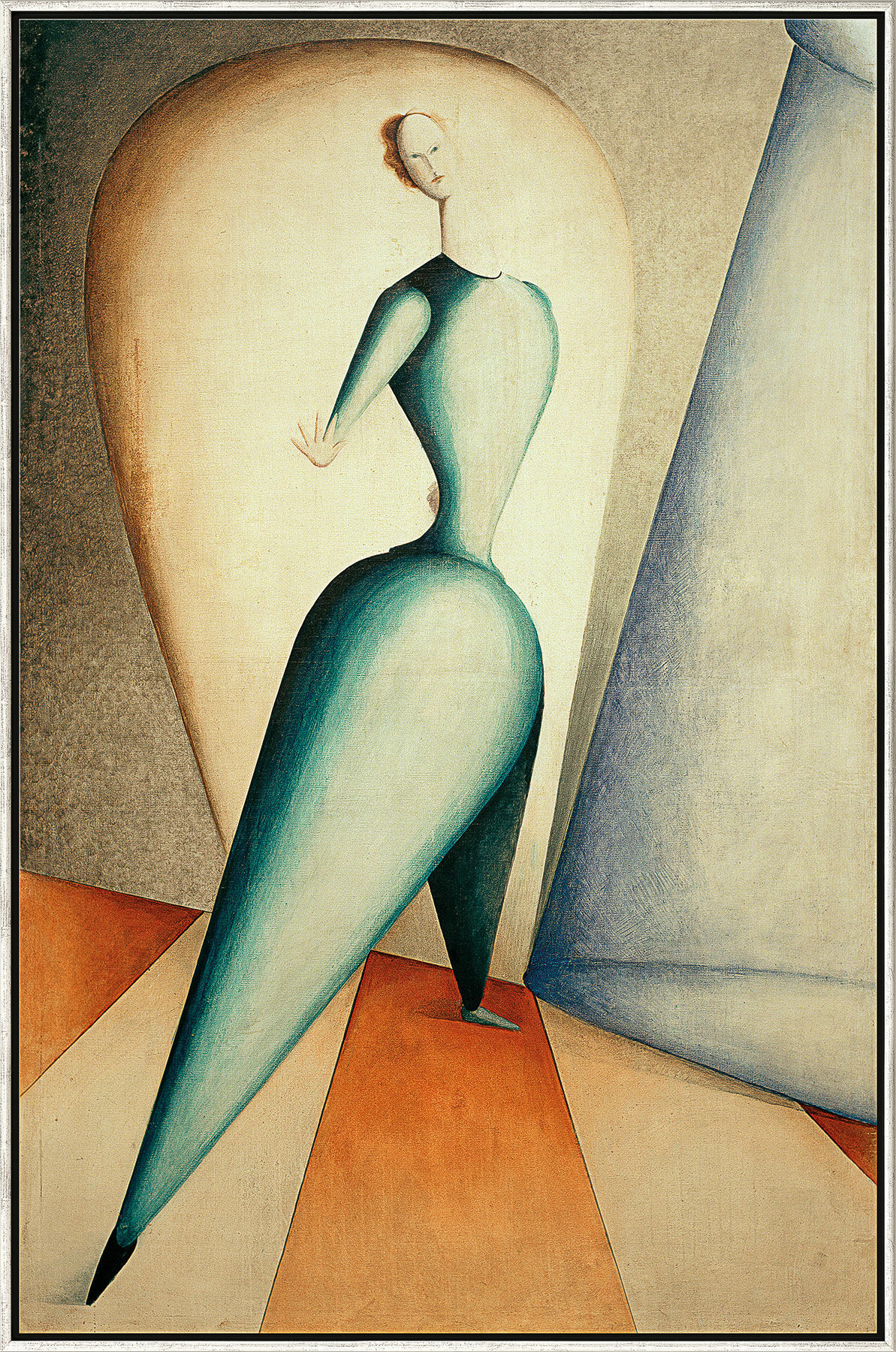Picture "The Dancer" (1922), framed


Picture "The Dancer" (1922), framed
Quick info
ars mundi Exclusive Edition | limited, 199 copies | reproduction, Giclée print on canvas | on stretcher frame | framed | size 121.5 x 80.5 cm (h/w)
Detailed description
Picture "The Dancer" (1922), framed
Original: 1922, oil and tempera on canvas, Pinakothek der Moderne, Munich.
Reproduction, Giclée print on canvas and stretched on a stretcher frame. The linen structure underlines the painting-like effect. Framed in a shadow gap frame. Limited edition of 199 copies. Size 121.5 x 80.5 cm (h/w). ars mundi Exclusive Edition.
Frame configurator
Customised picture frame

Frame configurator
Customised picture frame






Customer reviews
Frame variant: framed
Ein tolles Bild passt genau zu 'meinen' Bauhaustreppen! Wunschlieferzeit hat geklappt. Der Familie und den Gästen gefällt es und ich bin happy.

About Oskar Schlemmer
1853-1934
His project was "the human being". He depicts the human being without expressive expression, as an "art figure", insisting that in our highly complex time, the human being is still the ideal aesthetic measure of all things.
"I want to create types of humans, not portraits… I want the essence of space, not interiors," that is how Oskar Schlemmer summarised the approach of his art. His subject is figures and their relationship to the space around them. It would be wrong to see anonymized, even alienated people in these carefully composed mannequins. It is no coincidence that they are reminiscent of archaic models that Schlemmer revered as the highest expression of the human form.
For a long time, Oskar Schlemmer’s works were not comprehensively exhibited, and even basic scholarly publications were difficult. The reason: Schlemmer's second-generation heirs repeatedly withdrew loans from museums and sometimes even prohibited reproductions. This made the great Bauhaus artist a "famous unknown". While individual works, such as the "Bauhaustreppe" (Bauhaus Stairway), attained iconic significance, another part of his oeuvre virtually disappeared from contemporary consciousness. This changed only recently.
In 2015, 70 years after his death, the Stuttgart State Gallery dedicated a globally respected exhibition to Oskar Schlemmer, whose catalogue was finally able to offer a comprehensive, richly illustrated presentation. He was also once again perceived beyond specialist circles as the great master of modernism, to be mentioned with his Bauhaus colleagues Kandinsky and Klee.
Graphic or sculpture edition that was initiated by ars mundi and is available only at ars mundi or at distribution partners licensed by ars mundi.
Giclée = derived from the French verb gicler "to squirt, spurt".
The giclée method is a digital printing process. It is a high-resolution, large-format printout on an inkjet printer with special different-coloured dye- or pigment-based inks (usually six to twelve). The colours are fade-proof, i.e. resistant to harmful UV light. They have a high richness of nuance, contrast and saturation.
The giclée process is suitable for art canvases, handmade and watercolour paper as well as for silk.
Collective term for the painters and sculptors of the 20th century, such as Pablo Picasso, Salvador Dalí, Joan Miró, Marc Chagall and others, whose works are the most recognized in our times.


